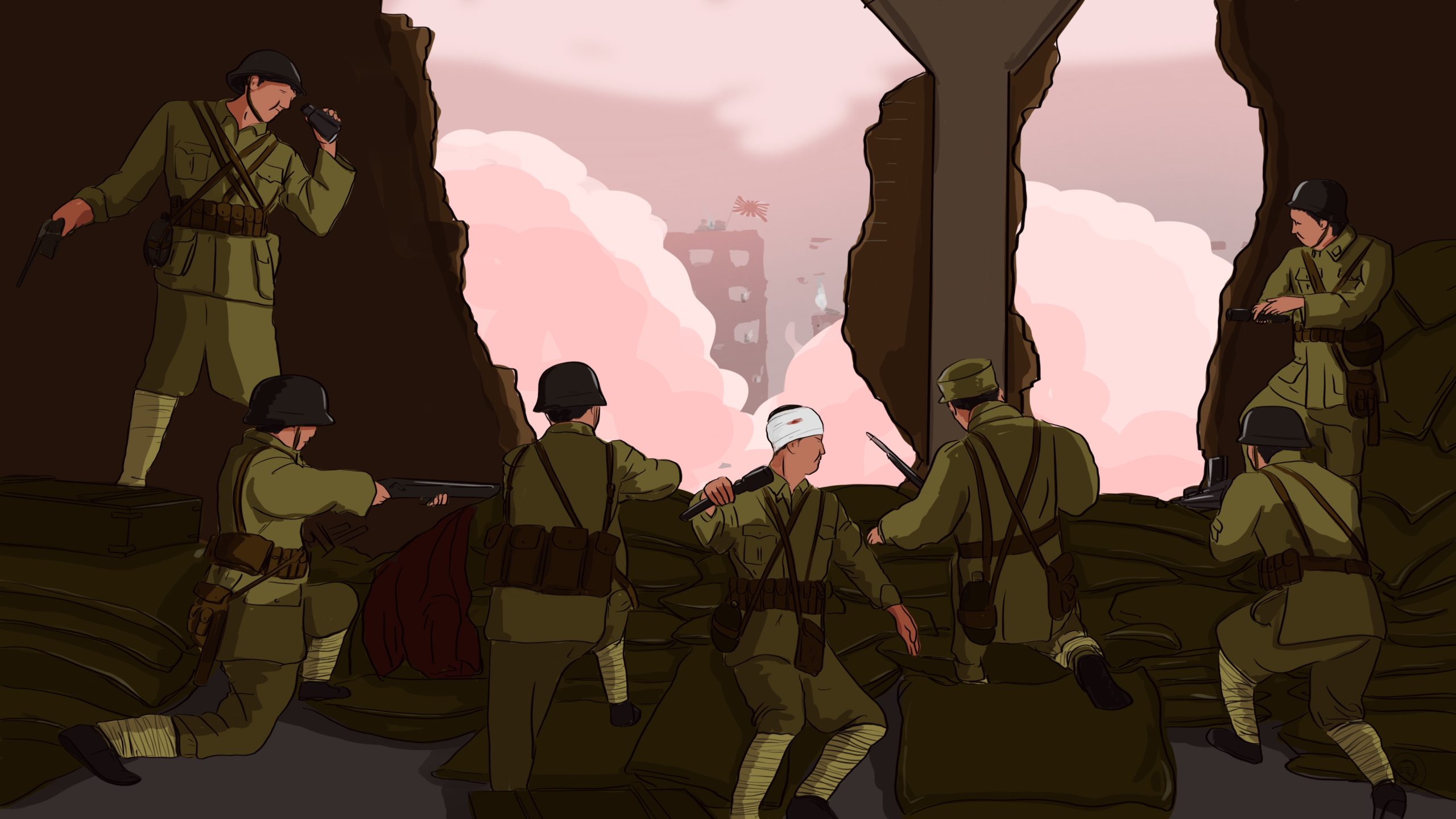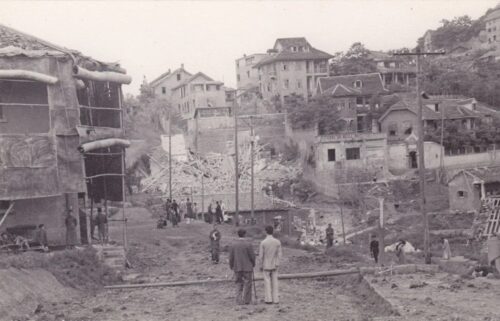China’s Alamo: The real story behind ‘the 800 heroes’
With the world watching, 400-some Chinese soldiers defended the Sihang Warehouse in Shanghai against hundreds of thousands of Japanese invaders. What's the real story behind this glorified battle?

This Week in China’s History: October 27, 1937
The image of a “last redoubt” is powerful. “Remember the Alamo!” became a rallying cry far beyond Texas, spawning Hollywood movies almost two centuries after all the defenders of a Mexican mission were killed. From Mosada, in ancient Palestine, to Snake Island in Ukraine, a small group of doomed defenders fighting against the odds can have motivational power far beyond the strategic or tactical value of the fight.
Reported in Western newspapers at the time as “China’s Alamo,” the Sihang Warehouse (四行倉庫 sì háng cāngkù) in Shanghai — also known in English as the “Chinese mint godown” — became the focus of world attention in the fall of 1937, when 400-some Chinese troops held off the Japanese army with little hope of victory. “While the world watched” is a figure of speech, but in this case the fighting was a literal spectator event, as residents and refugees in Shanghai’s International Settlement stood just yards away on the opposite bank of Suzhou Creek. Protected by the neutrality of the European powers, onlookers could see the fate of Shanghai’s last Chinese defenders play out before their eyes.
The stage for this drama was set in the summer. The Marco Polo Bridge Incident in July had touched off Japan’s long-anticipated invasion of China. Japan quickly occupied northern coastal cities and the area around Beiping (Beijing’s name while it was not the capital, from 1927-49), but Chiang Kai-shek (蔣介石 Jiǎng Jièshí) responded not in the north, but in Shanghai. On August 14, Chinese forces attacked Japanese troops in Zhabei district, triggering some 300,000 reinforcements to arrive from Japan. For the next two months, in the words of historian Eric Niderost, “The battle for Shanghai became a slaughterhouse, a stalemate that conjured memories of Verdun and the Somme.” And “Stalingrad on the Yangtze” was how Peter Harmsen subtitled his definitive book on the subject, Shanghai 1937.
Crucially, Shanghai was divided. The center of the city was the International Concessions: the International Settlement and the French Concession, all-but colonies that were administered by foreigners and existed, for all practical purposes, outside of Chinese control and jurisdiction. Since Japan was at war with none of the European (or American) powers that ran the concessions, these were neutral ground, and Japan was unwilling, for now, to bring other countries into their war with China. Japan’s goal was to eliminate the Chinese defenders and take control of all of Shanghai except for the foreign concessions. What to do with them would be left for another day, but the first goal was to overcome Chinese resistance.
By mid-October, it was clear that the Chinese forces could not prevent Shanghai from falling to the Japanese. This was not wholly unexpected, but the worrisome part was that Chiang needed to withdraw his armies if he was to have any hope of continuing to prosecute the war. This would be difficult, with the Japanese monitoring all Chinese movements. Somehow, on the night of October 26, the Chinese forces managed to vacate their positions and slip, undetected, north of Suzhou Creek and into the International Settlement: neutral territory. The sole exception was one battalion — the 1st battalion of the 524th Regiment — left behind to serve as a symbol of Chinese resistance.
By stroke of good fortune for the Chinese — and exceptionally poor planning by the Japanese — this “lost battalion” took refuge in a warehouse: the Sihang, or “four banks warehouse,” turned out to be a perfect setting. Harmsen describes the warehouse as “a virtual fortress.” Its thick walls provided rifle slots for firing upon approaching soldiers with impunity. And even if it was surrounded on three sides, the fourth side faced Suzhou Creek…and the Lese Bridge, which led to the safety of the International Settlement.
Xiè Jìnyuán 谢晋元 took command of the battalion and gathered the soldiers of his unit together until, by morning on October 27, he had some 411 soldiers — 411 vs. hundreds of thousands of Japanese! — defending the Sihang Warehouse.
Chiang Kai-shek had brought the war to Shanghai on purpose. It was a risk, exposing China’s largest city to urban combat, but he was gambling that the bloody spectacle would unite people — at home and abroad — in support of his cause. “Even north China,” historian Rana Mitter writes in his history of the Sino-Japanese War, Forgotten Ally, “felt remote when viewed from the populous Yangtze delta, where Shanghai lies.” Moreover, to quote Mitter again, “by bringing the war to Shanghai, Chiang forced the world to take notice.”
Chiang may not have literally wanted the world to watch, but what happened at the Sihang Warehouse is hard to exaggerate. Sitting on rooftops or lining the banks of Suzhou Creek, just 60 yards away from the fighting, residents of the International Concession witnessed the war played out before their eyes. Niderost writes, “It became a kind of bizarre sporting event, with Chinese spectators crowding Suzhou Creek’s banks to cheer on the defenders. At times an estimated 30,000 Chinese joined British soldiers and other Westerners to watch the show. When the crowds saw a Japanese movement, they would pass on the information to the defenders via enormous message signs in characters large enough to be read from a distance.” Food, medicine, and other supplies were relayed to the defenders, sometimes over the Lese Bridge under cover of darkness, in other cases sent by pulleys across the creek.
With foreign correspondents reporting from the literal front lines, the “suicide battalion” (to quote New York Times reporter Hallet Abend) was scoring a global propaganda victory, capturing headlines around the world.
After three days, and with Japanese artillery brought fully to bear against the warehouse, orders were given (in violation of the Concessions’ neutrality) to evacuate the Lost Battalion to the safety of the International Settlement. “There was no real plan,” Harmsen writes. “They would simply have to run across the bridge as fast as they could…if the Japanese did notice the evacuation and opened fire, they just had to hope that the machine guns didn’t kill too many of them.”
Miraculously, of the 411 defenders who bore arms on the morning of October 27, 356 reached the safety of the International Settlement.
The parallels to the Alamo continue in film. The top-grossing movie of 2020 was an epic account of the defense of the Sihang Warehouse titled The 800 (八佰 bābǎi). How did the story of some 400 men become known as “the 800”? Apparently, Yáng Ruìfú 杨瑞符, one of the commanders of the defense, told medics evacuating wounded from the warehouse to say that there were 800 men there, fearing that if the Japanese knew how small the real number was they would overrun them. So, forevermore they are — as the title of a 1976 film about the warehouse says — “the eight hundred heroes.”
This Week in China’s History is a weekly column.





